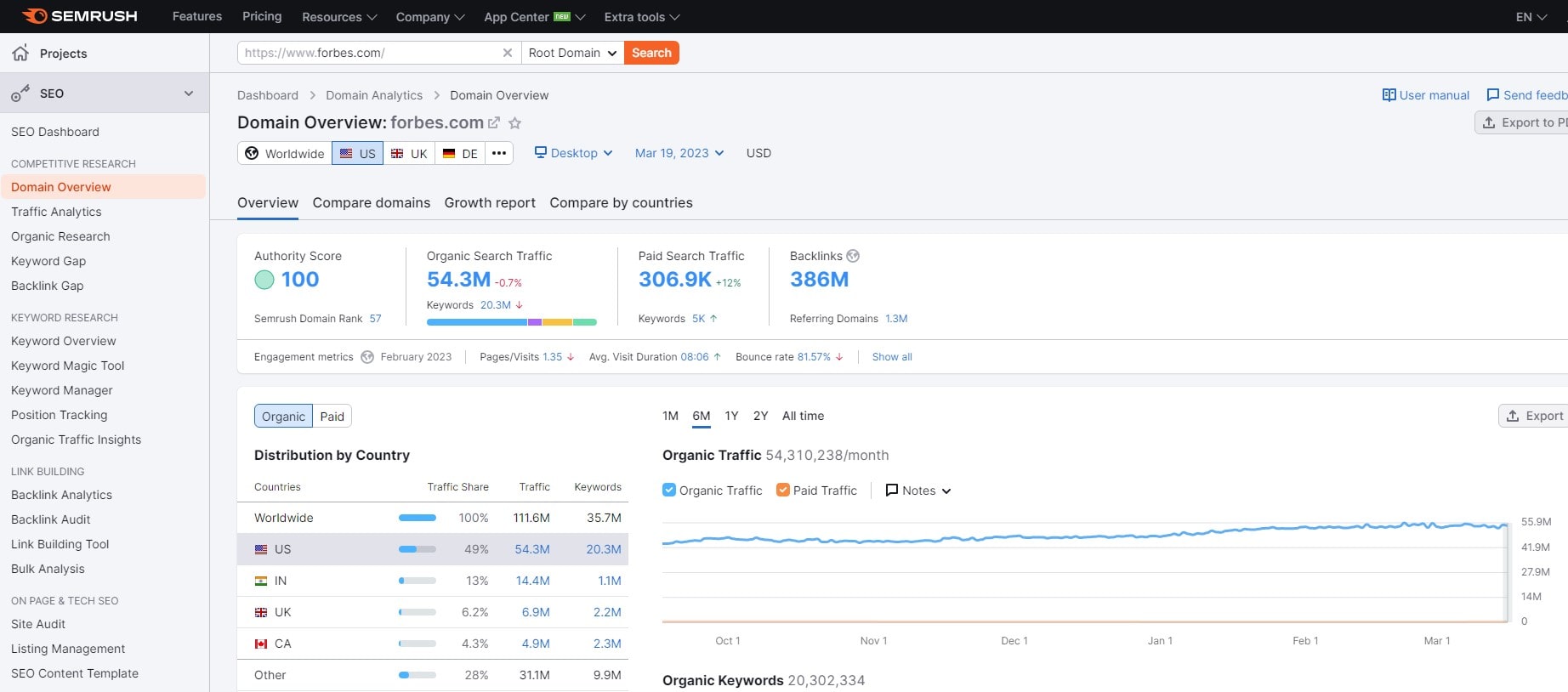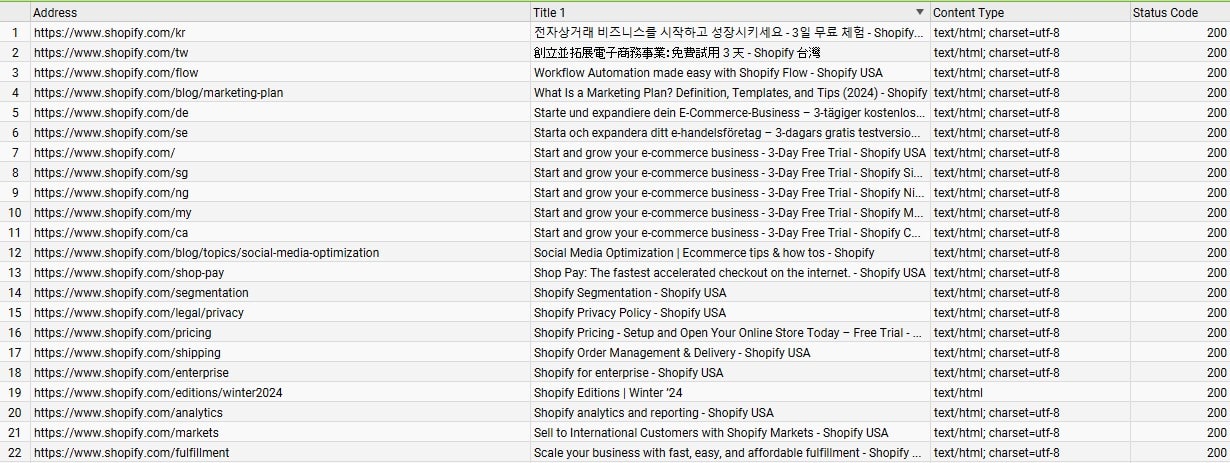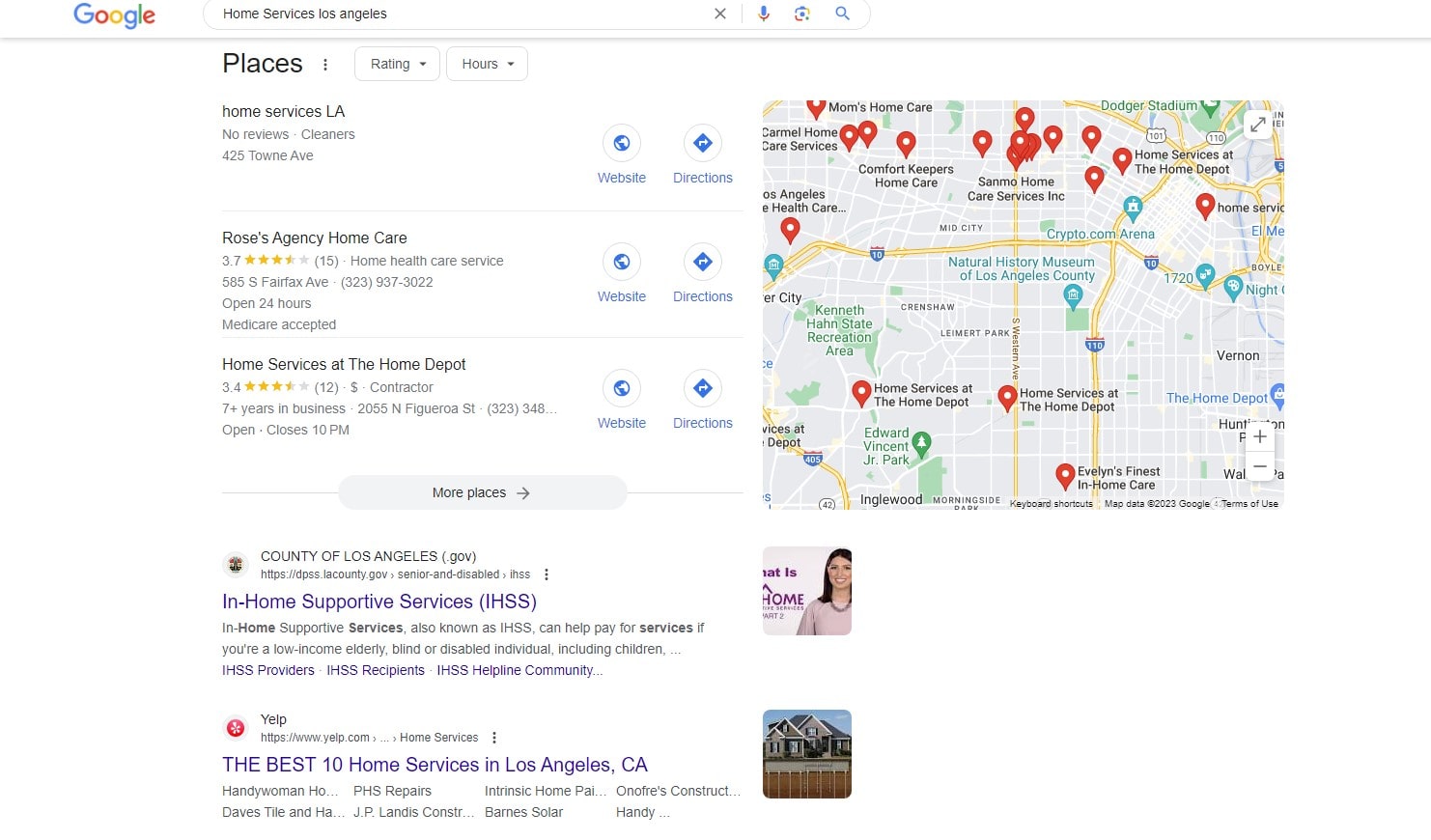Imagine a world where your website’s traffic grows just by wishing upon a star. Sadly, magic wands are replaced with hard data and strategic planning in the SEO universe. Understanding and applying SEO standards has never been more important in 2024 as we navigate the ever-changing SEO world. This isn’t about chasing the latest trends unthinkingly; it’s about making informed decisions that drive measurable results. And that’s where Plerdy comes into play—offering insights and tools to transform your SEO strategy from guesswork into a precision-driven approach. Let’s dive into the 10 SEO benchmarks in 2024, setting your site up for success in the digital cosmos.
Mastering Organic Search Traffic for SEO Benchmarks

In today’s digital landscape, more than simply having a website is needed; it’s about being discoverable to the appropriate audience. Organic search traffic is a cornerstone of this online discoverability and critical to achieving SEO benchmarks.
Strategies to Elevate Organic Traffic for SEO
To escalate organic traffic, a key SEO benchmark is prioritizing keyword optimization. Employ tools like SEMrush to pinpoint high-potential keywords that align with your content. Incorporate these keywords strategically in your website’s titles, headings, and body content. Additionally, crafting high-quality content that addresses your audience’s needs boosts engagement and encourages sharing, further enhancing your website’s organic reach. Integrating authoritative backlinks strengthens your website’s credibility, signaling search engines about the value of your content. Updating existing content ensures relevance, contributing to sustained or improved search rankings.
Utilizing Tools to Monitor Organic Traffic for SEO Benchmarks
Google Analytics remains an essential tool for monitoring organic traffic, a crucial SEO benchmark. It provides in-depth insights into user behavior and traffic origins. Complement this with SEMrush’s SEO analysis, which offers detailed feedback on keyword effectiveness and user engagement. When used together, these tools present a holistic view of your SEO efforts and help pinpoint areas for enhancement.
A blend of strategic keyword placement, engaging content creation, and building backlinks is essential to effectively understanding and boosting organic search traffic. Analytical tools like Google Analytics and SEMrush enable you to track your SEO benchmarks, fine-tune your strategies, and attract more relevant traffic to your website.
The Importance of User Experience Signals

Gone are the days when SEO was about cramming keywords into your content. Today, user experience (UX) signals are pivotal in how search engines rank your site. It’s simple: if users love your site, search engines will too.
To improve UX, focus on site speed first. A fast-loading site keeps users happy and engaged. Tools like Google’s PageSpeed Insights can help you gauge your site’s performance and offer actionable improvement advice. Next, ensure your site is mobile-friendly. With more people browsing on their phones, mobile optimization is non-negotiable for SEO success. Google’s Mobile-Friendly Test can quickly tell you how well your site performs on mobile devices.
Content readability is another critical factor. Break text into manageable chunks, use headings for structure and incorporate images or videos to enhance understanding. Simple, engaging content keeps users on your website longer, showing search engines that your site is valuable.
Lastly, navigation and site structure should be intuitive. A well-organized site helps users find what they need without frustration, boosting UX signals. A clear, logical menu and a robust internal linking strategy can significantly improve site usability.
Remember that UX is a cornerstone of modern SEO. Site speed, mobile-friendliness, content readability, and easy navigation boost user happiness and search engine rankings. Google’s PageSpeed Insights and Mobile-Friendly Test help you find and fix site issues that improve user experience.
Leveraging Impressions, CTR, and Clicks

In the world of SEO, visibility is gold. But what happens after you’re seen? Impressions, click-through rates (CTR), and clicks are the trio that tells you not just if you’re being noticed but if you’re being chosen.
Impressions count how often your page appears in search results, giving you a sense of your visibility. However, it’s the CTR that reveals the real story. It measures the percentage of impressions that turned into clicks. A high CTR means your title and description are compelling enough to make someone stop and click. Improving your CTR involves crafting enticing meta titles and descriptions that promise and deliver value. Google’s guide on creating descriptive titles and snippets can be a great resource here.
Clicks, on the other hand, are the culmination of impressions and CTR’s promise. They indicate actual visits to your site, which is the first step in any conversion journey. Content must match the user intent to convert impressions into clicks and clicks into conversions. This alignment is what turns casual browsers into engaged visitors.
Use SEO tools like Google Search Console to analyze your performance and boost these metrics. It provides insights into which pages perform well and which need tweaking for better visibility and engagement.
Impressions, CTR, and clicks are not just vanity metrics. They are vital signs of your SEO health, indicating how visible you are and how effective your content is at engaging and attracting users. By improving these metrics, you’re directly enhancing your site’s ability to attract more traffic and, ultimately, achieve its business goals.
Evaluating Keyword Performance and Value

Diving into the sea of keywords without knowing which can float your SEO boat is a risk no marketer should take. Evaluating keyword performance and understanding its value is like having a compass in this vast ocean, guiding your content to the shores of high search engine rankings.
To assess keyword performance, start by analyzing search volume and competition. High-volume, low-competition keywords are gold. However, the real gem lies in understanding the intent behind the keywords. Tools like Ahrefs or SEMrush provide insights into these metrics, helping you choose keywords that attract traffic and are achievable and relevant to your content strategy.
The value of a keyword isn’t just in its ability to bring in traffic; it’s also in its conversion potential. A keyword that leads to conversions is infinitely more valuable than one that merely attracts visitors. This is where tracking conversions through Google Analytics becomes crucial. Goals let you track which keywords drive site actions like newsletter signups, purchases, and contact forms.
Remember that keyword success doesn’t happen overnight. It requires continuous monitoring, analysis, and adaptation. By focusing on your keywords’ performance and value, you’re not just chasing traffic—you’re cultivating a garden of opportunities that can lead to tangible results for your business. As you acquire data and refine your keyword approach, your site will rank on search engine results pages.
The Role of Backlinks in SEO Strategy

In the grand chess game of SEO, backlinks are your powerful queens. They gracefully bridge the internet boundaries, connecting your site to others and signaling to search engines that your material is significant, authoritative, and worth ranking high.
Building quality backlinks involves:
- Reaching out to relevant websites.
- Guest blogging with valuable content.
- Creating shareable, high-quality content that naturally attracts links.
Remember, it’s not about the quantity of backlinks but the quality. A link from a reputable site can be more impactful than dozens from lesser-known sources. Utilize tools like Moz’s Link Explorer or Ahrefs to analyze your backlink profile and target new opportunities.
Monitoring your backlink profile is also crucial. Regular checks let you find and remove poisonous links that hurt SEO. It’s a process of cultivating a garden of links, pruning the harmful ones, and nurturing the benefits for your site’s growth.
Backlinks are indispensable to a robust SEO strategy. They enhance your site’s visibility and credibility and drive targeted traffic from other reputable sites. By building and maintaining a healthy backlink profile, you ensure that search engines see your site as a valuable resource, helping you climb the ranks in the search results. It’s a long-term investment that boosts your site’s authority and search engine positioning.
Tracking Indexed Pages

Imagine crafting a masterpiece only to have it locked away unseen. That’s what happens when search engines don’t index your pages. Tracking indexed pages is crucial to ensure your content is visible and accessible to your audience.
Google Search Console is your go-to tool for keeping tabs on which pages are indexed. It provides a direct insight into how search engines view your site. Regularly check the “Coverage” report to see the status of your pages – whether they’re indexed, excluded, or if there’s an issue preventing indexing. This step is fundamental in identifying and resolving any barriers that might keep your content hidden from potential visitors.
Ensuring all valuable content is indexed is akin to opening the doors to your digital library for the world to enter and explore. Each indexed page increases your chance of being found, driving traffic and engaging with your audience. In wrapping up, remember that your SEO strategy should always include a routine check-up of indexed pages. This helps maximize your site’s visibility but also helps identify areas that need attention or improvement. Keeping a vigilant eye on your indexed pages ensures that your content works as hard as you do to reach your audience.
Mastering Competitor SEO Analysis for Key Benchmarks

In digital marketing, observing your competitors is a strategic necessity, not mere curiosity. Competitor SEO analysis is pivotal for deciphering their strategies, learning from their achievements, and finding opportunities they’ve missed. It’s about gaining a tactical edge to enhance your SEO performance and online visibility.
Approaches for Competitor SEO Analysis
The process starts with identifying your true SEO competitors, who may extend beyond your immediate industry rivals. Utilize tools like Moz or Ahrefs to discover domains vying for similar keywords. Examine their content approach, backlink portfolio, and keyword strategies to understand their success drivers. This knowledge can inform your content and SEO strategy, highlighting areas for improvement or the potential to excel in specific topics.
Moreover, evaluating their website structure and user experience can provide insights into optimizing your site. Advancements in navigation ease or page loading speed can provide a competitive advantage in SEO rankings.
Competitor SEO analysis is about strategic innovation, not mere replication. By analyzing the tactics of others in your industry, you can spot trends, sidestep common errors, and find unique ways to distinguish your online presence. This analysis should be a continuous element of your SEO strategy, ensuring you are always one step ahead. In the dynamic landscape of SEO, knowledge is indeed power. Keeping abreast of your competitor’s strategies is crucial for maintaining a dominant position in the online world.
Importance of Local SEO Metrics

In a world where the nearest coffee shop is just a search away, local SEO metrics become the beacon for businesses to shine in their community. It’s not just about being online; it’s about being found by the local audience when it matters most.
Focusing on local SEO metrics such as Google My Business insights, local search rankings, and reviews is crucial. These metrics show how visible your business is in local search results, what people say about your services, and where you stand compared to local competitors. Tools like Google My Business provide valuable data on how customers find your listing, whether through search or maps and what actions they take, giving you insights to optimize your local presence further.
Mastering local SEO metrics is essential for businesses aiming to dominate their local market. It enables you to tailor your strategies to meet your local audience’s specific needs and behaviors, ensuring your business is the first thing they find. Monitoring these indicators helps you improve your local SEO, increasing visibility, foot traffic, and consumer interaction. In local search, being armed with the right metrics means you’re not just participating but competing to win.
Assessing Mobile-Friendliness

In today’s fast-paced world, a mobile-friendly website is more important than merely being mobile-compatible. Your website’s mobile performance can make or break your online presence since most searches are done on mobile devices.
Assessing mobile-friendliness involves more than just checking if your site loads on a smartphone. It’s about ensuring a seamless experience for users, from easy navigation to fast loading speeds. Google’s Mobile-Friendly Test offers a straightforward way to evaluate your site’s mobile design, providing insights and recommendations for improvement. Additionally, user experience elements such as button sizes, text readability, and image optimization are crucial for keeping mobile users engaged and reducing bounce rates.
Mobile-friendly websites are crucial to SEO. They’re a critical factor not just for user satisfaction but also for ranking higher in search results. By prioritizing mobile-friendliness, you ensure your site is accessible and appealing to many users browsing on their devices, ultimately driving more traffic and improving your online visibility. Remember, in the digital age, your mobile site is often the first impression you make—make sure it’s a good one.
Monitoring SEO Return on Investment (ROI)
Investing in SEO is like planting a garden. You sow seeds, nurture them, and wait patiently for the fruits of your labor. But how do you measure the success of your efforts? Monitoring SEO Return on Investment (ROI) is your yardstick, assessing the efficiency and profitability of your SEO strategies.
SEO ROI is calculated by comparing SEO costs (time, resources, and money) to organic search traffic revenue. It’s crucial to track conversions from organic traffic, which can be done through Google Analytics. By setting up goals and assigning monetary values to conversions, you can directly correlate your SEO efforts to revenue. Additionally, considering the lifetime value of a customer acquired through organic search can provide a more comprehensive view of your SEO ROI.
Aligning SEO strategies with business objectives ensures that every effort contributes to the bottom line. Your SEO efforts should have clear, measurable goals corresponding to your business plan, whether raising brand awareness, leads, or sales.
Monitoring SEO ROI is not just about crunching numbers; it’s about understanding the value SEO brings to your business. It helps justify the investment in SEO and guides strategic decisions to improve efficiency and profitability. By closely monitoring your SEO ROI, you can fine-tune your strategies, focus on high-impact activities, and ensure that your SEO garden yields the best possible harvest.
Conclusion
Navigating the SEO landscape in 2024 is like embarking on a journey through a digital jungle. Armed with the right benchmarks and strategies, you’re set to uncover the treasures of organic visibility and user engagement. Remember, SEO is not a one-time venture but a continuous quest for improvement and adaptation. The insights shared here are your compass, guiding you toward success in the ever-evolving world of search engine optimization. Curious to explore more digital marketing strategies and SEO secrets? Dive into the wealth of knowledge on the Plerdy blog, where cutting-edge tips and tools await to enhance your online presence. Make Plerdy your go-to resource for elevating your SEO game and turning insights into actionable results.
